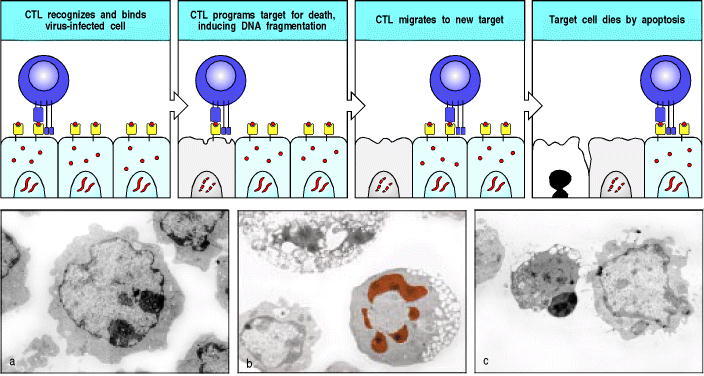From: T cell-mediated cytotoxicity

NCBI Bookshelf. A service of the National Library of Medicine, National Institutes of Health.

Specific recognition of peptide:MHC complexes on a target cell (top panels) by a cytotoxic CD8 T cell (CTL) leads to the death of the target cell by apoptosis. Cytotoxic T cells can recycle to kill multiple targets. Each killing requires the same series of steps, including receptor binding and directed release of cytotoxic proteins stored in lytic granules. The process of apoptosis is shown in the micrographs (bottom panels), where panel a shows a healthy cell with a normal nucleus. Early in apoptosis (panel b) the chromatin becomes condensed (red) and, although the cell sheds membrane vesicles, the integrity of the cell membrane is retained, in contrast to the necrotic cell in the upper part of the same field. In late stages of apoptosis (panel c), the cell nucleus (middle cell) is very condensed, no mitochondria are visible, and the cell has lost much of its cytoplasm and membrane through the shedding of vesicles. Photographs (× 3500) courtesy of R. Windsor and E. Hirst.
From: T cell-mediated cytotoxicity

NCBI Bookshelf. A service of the National Library of Medicine, National Institutes of Health.